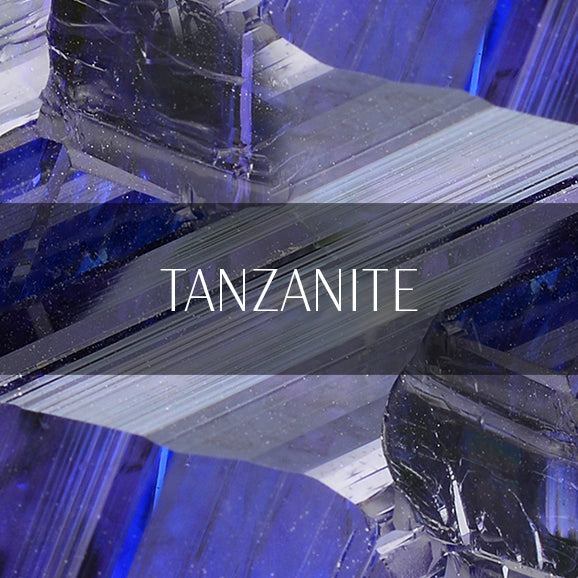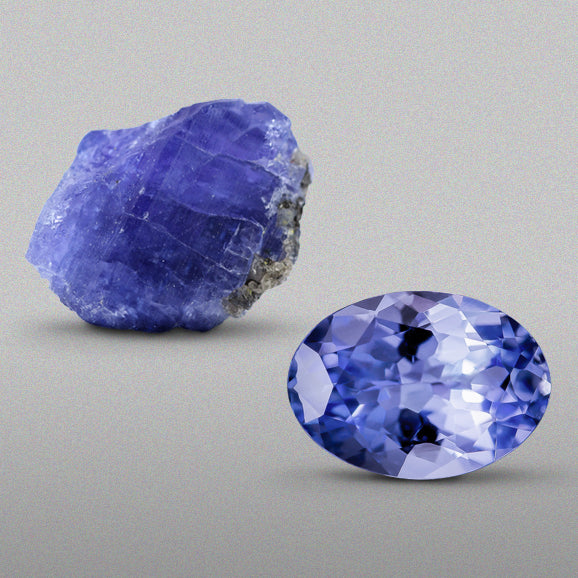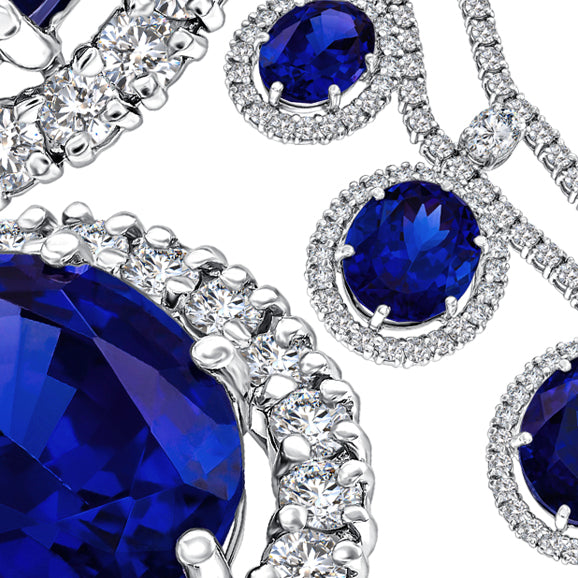The Very Short History Of Tanzanite
Tanzanite was discovered, quite by accident in 1967 in Tanzania. According to the story, Ali Juuyawatu, a Masai tribesman was walking through the Tanzanian Arusha grasslands in the Mount Kilimanjaro foothills. As he walked, a purplish, blue rock caught his eye as the sun’s rays sparkled off it. He picked up the stone and kept it. A short time later he sold it to Manuel D’Souza, an amateur gem prospector on the hunt for rubies and diamonds.
At first, the stone was confused for peridot, then he assumed it was a non-gem stone called dumortierite. Later the rock was shown to John Saul, a gemstone wholesaler and geologist. Unable to identify with certainty what the stone was he sent it to his father, Hyman Saul, who, coincidentally, was a vice president at Saks 5th Avenue. The samples made their way to a building adjacent to Saks, housing the Gemological Institute of America who correctly identified the stone as a new variety of a mineral called zoisite.
The scientific name for the gem is blue zoisite but Tiffany & Co renamed the gem Tanzanite and for a time were the exclusive vendors of jewellery made with the stone. By 1971 it is estimated that 2 million carats of tanzanite had been mined. By 2011, production of rough tanzanite had risen to 2.4 million carats per year, weighing approximately 480 kg.
The most massive tanzanite stone found is a 16,839 carat stone weighing 3.38 kg, mined in 2005.
Tanzanite In Jewellery
There is no single grading system for tanzanite quality; however, quality is based upon the colour of the stone ranging through bluish-violet, indigo and violet-blue. It is usual for tanzanite stones to be heat treated to remove the browner and burgundy elements giving a desired, stronger, violet-blue colour.
Occasionally gem-quality tanzanite will take on a green colour under heating, but this has little commercial value. Heat treatment has no effect on the value or price of tanzanite gemstones.
Some stones are coated with a thin layer of cobalt to improve the colour, this change is not permanent. Hopefully, the jeweller will disclose of such non-permanent treatments have been applied to the stones you buy.
Tanzanite can display colour changes depending upon the light under which they are viewed. Under fluorescent light, the blue colour is dominant, and under incandescent lamps, the violet hue predominates. When buying a piece of tanzanite jewellery, it is necessary to check the stone under different lights to verify that the colour is exactly what you want.
Tanzanite is not as hard or durable as, for example, sapphire but it can be used in everyday jewellery with reasonable precautions against knocks. The stone does not fade with exposure to light heat or common chemicals.
To clean tanzanite, use warm water and brush with a soft toothbrush.
Tanzanite is a rare stone, very beautiful and highly prized. The colour makes it an elegant gem for almost any type of jewellery. Given that estimates suggest that all the tanzanite known to exist will have been mined within 300 years. If the wearer takes care of it, the stone will be an almost priceless heirloom in just a few generations from now!


